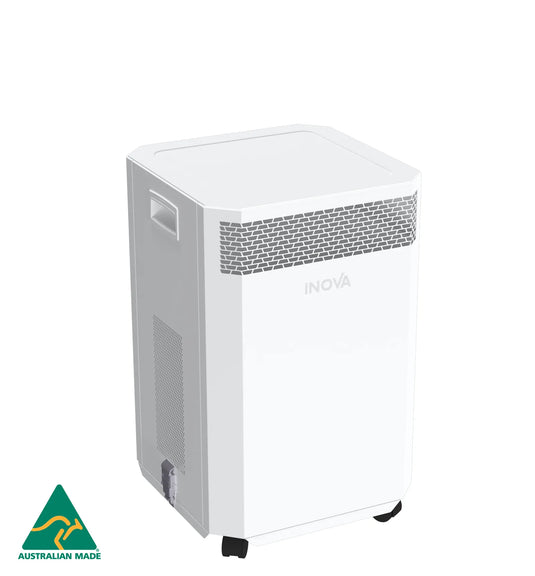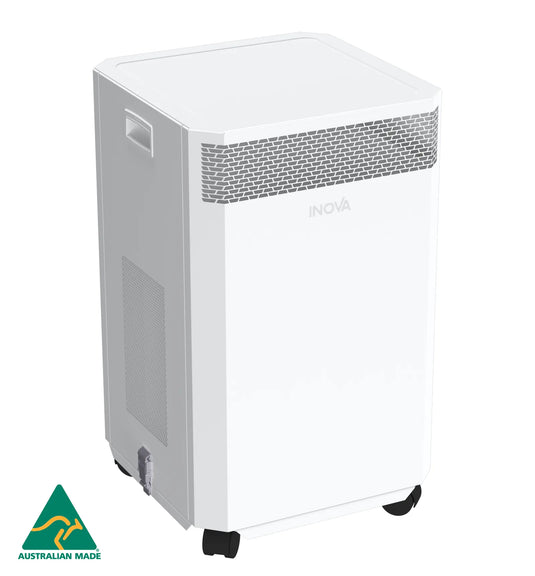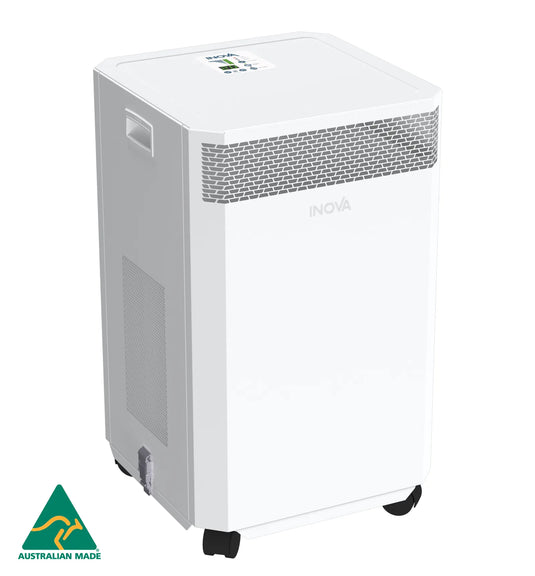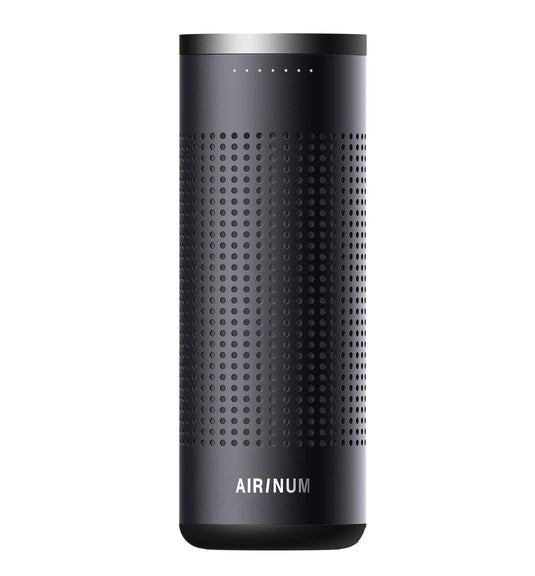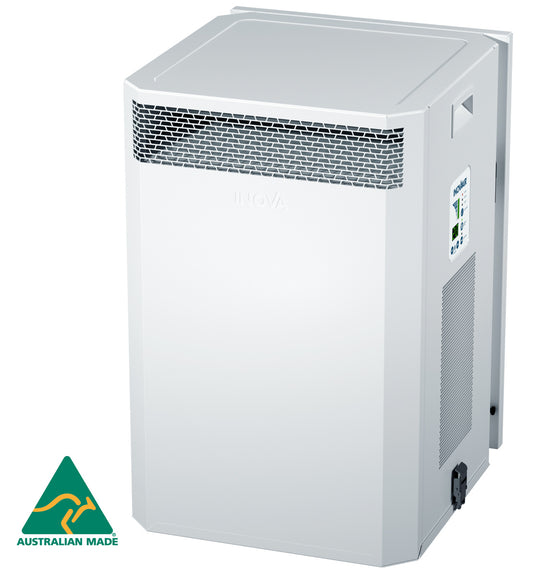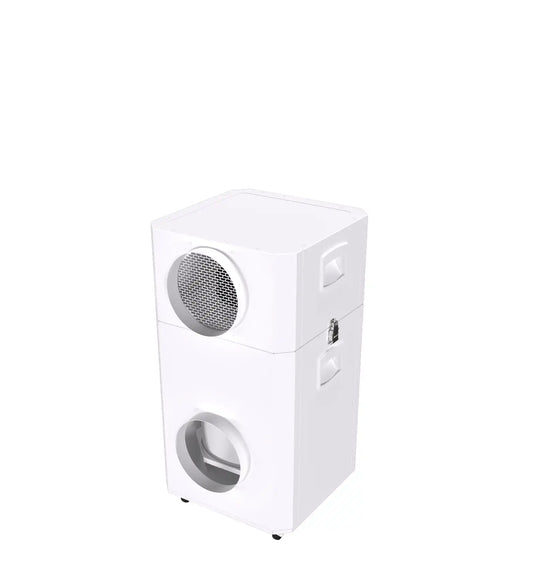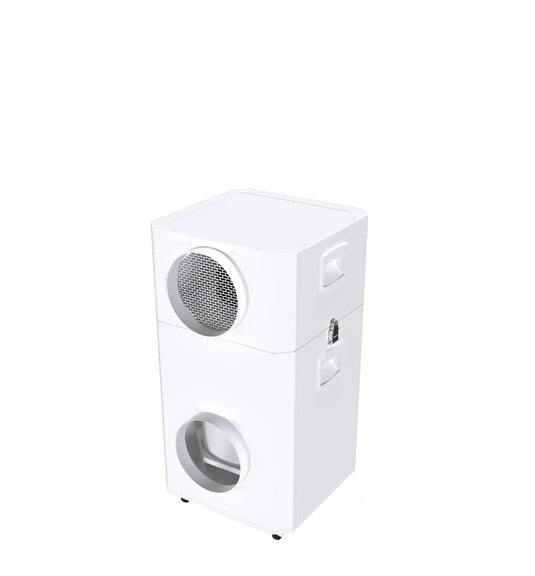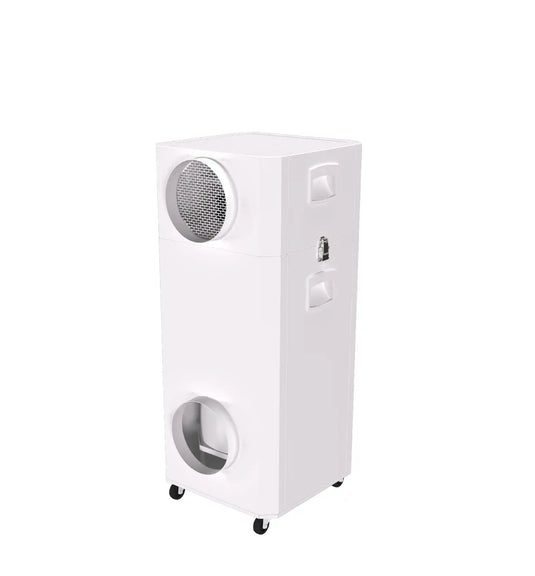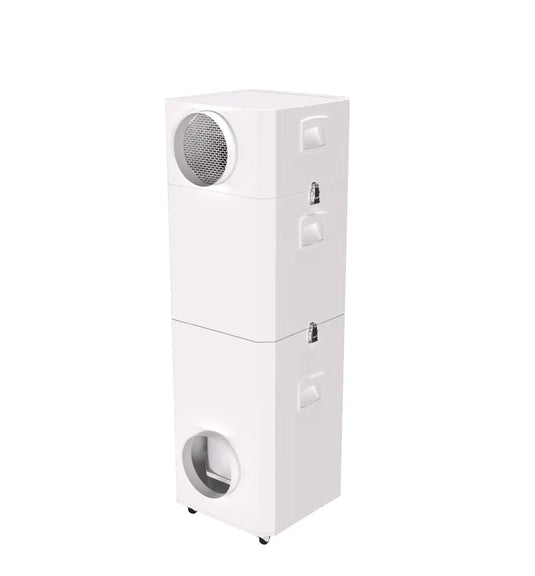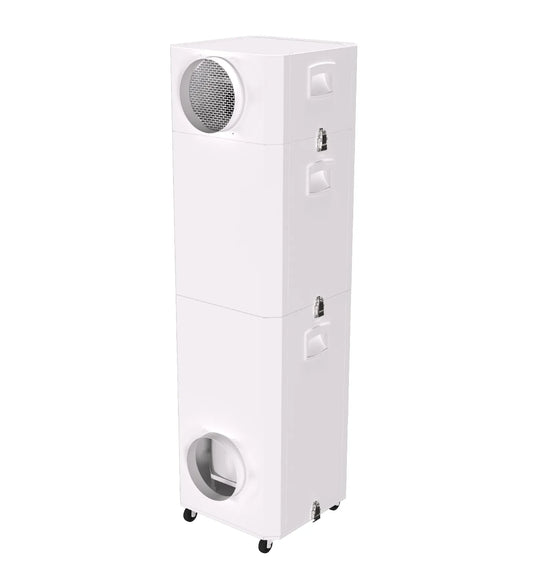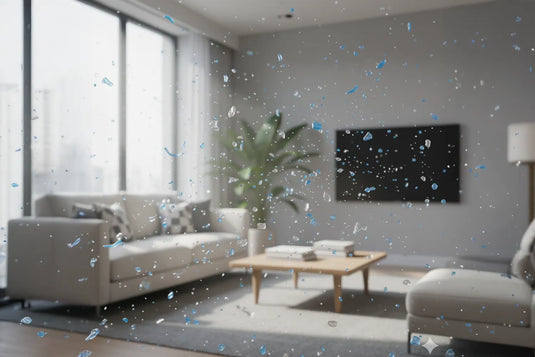CIRS and the Best Air Purifier for Mould

If you’re dealing with mould and Chronic Inflammatory Response Syndrome (CIRS), an air purifier can be a powerful part of your toolkit—but it’s not a substitute for fixing moisture problems. Look for H13 medical-grade HEPA, kilograms of activated carbon, a fully sealed design, and enough airflow to turn the air in the room over at least 5–8 times per hour. INOVA’s HEPA + carbon systems are built around those principles, making them a strong choice for mould-sensitive households.
First things first: What is CIRS?
Chronic Inflammatory Response Syndrome (CIRS) is a complex, clinician-diagnosed condition often associated with exposure to water-damaged buildings. People with CIRS can be especially sensitive to mould spores, fragments, and microbial by-products in indoor air.
Important note: Air purifiers help reduce airborne particles and some gases/odours. They don’t diagnose, treat, or cure CIRS, and they can’t replace building remediation. Always follow guidance from your healthcare professional and building specialists.
Mould indoors: why it’s more than “just spores”
When a building has moisture problems, the air can contain:
-
Whole spores (larger particles)
-
Spore fragments and fine debris (very small particles)
-
Musty odours and volatile compounds from damp materials
A good purifier must tackle both particles and gases/odours—and do so continuously.
What an air purifier can (and can’t) do for mould & CIRS
Can do:
-
Capture airborne spores and fragments before you inhale them
-
Reduce odours and some volatile compounds from damp materials
-
Provide ongoing background control while you remediate and manage humidity
Can’t do:
-
Fix leaks or remove hidden mould in cavities
-
Replace source control (drying, removal, and repairs)
Think of the purifier as defence, while remediation and moisture control are offence.
The non-negotiables: Features to look for
1) H13 Medical-grade HEPA
You want a true, tested HEPA filter that captures fine and ultrafine particles—including tiny fragments that often bother sensitive occupants. “HEPA-type” or “HEPA-like” isn’t enough.
2) Kilograms of activated carbon
Fine particles are only half the story. A thick bed of kilograms of activated carbon helps reduce musty odours and certain VOCs associated with dampness. Thin carbon “sprinkles” or a light carbon coating won’t perform the same.
3) Fully sealed, zero-bypass design
If air can leak around the filter, it can carry contaminants back into the room. Look for a gasketed, sealed housing so all air is forced through the filters. Metal or robust composite housings are a plus for durability and sealing.
4) Enough airflow for real-world use (ACH)
Purifiers must move enough air to be effective. Aim for:
-
Bedrooms/Living spaces: 5–8 Air Changes per Hour (ACH)
-
Problem rooms/High sensitivity: 8–12 ACH if practical
Quick sizing:
-
Measure room volume: (length × width × ceiling height)
-
Multiply by desired ACH to get m³/hour you need
Example: 4 m × 3 m room with 2.7 m ceiling
Volume = 32.4 m³
At 8 ACH → 259 m³/h required
Choose a purifier (or two) that can deliver that on a quiet, sustainable setting, not just turbo mode.
5) Low noise at effective speed
If it’s too loud, you’ll turn it down or off. Look for models that maintain high filtration quietly—especially for sleep.
6) Simple, reliable maintenance
You’ll need to replace HEPA and carbon periodically. An easy-access design helps.
Bonus: a pre-filter to trap dust and extend HEPA life.
7) No ozone or “gimmicks”
Avoid ozone generators and any tech that adds reactive by-products to your air. If a unit uses ionisation, confirm it’s zero-ozone and primarily a support feature (HEPA + carbon should do the heavy lifting).
Why INOVA?
INOVA Air Purifiers are engineered around the needs of sensitive users:
-
H13 Medical-grade HEPA for fine and ultrafine particle control
-
Kilograms of activated carbon options for odours and gases
-
Sealed housings to prevent bypass
-
High, usable airflow designed for real-world, quiet operation
(If you’re unsure which INOVA model is right for your space and sensitivity, we’ll help you size it properly based on your room volumes and ACH targets.)
Set-up tips for mould-sensitive homes
-
Place it smartly: Near your main breathing zone or where you spend the most time (bedroom/living). Keep the intake and outlet clear of walls and furniture.
-
Run 24/7: Continuous, quiet filtration beats occasional high-speed bursts.
-
Close windows during high-pollen or damp conditions; ventilate strategically when outdoor air is clean and dry.
-
Control humidity: Keep indoor RH between 40–50%. Use dehumidifiers or HVAC settings as needed.
-
Vacuum with HEPA: Surface cleaning reduces the amount of dust that becomes airborne.
-
Stay on top of filter maintenance: Replace pre-filters more frequently in dusty homes; follow the recommended schedule for HEPA and carbon filters.
FAQs
Q: Will a HEPA filter remove mycotoxins?
A: Mycotoxins are chemicals, not particles. However, they often ride on particles or dust. HEPA reduces the particle carriers, and activated carbon can help adsorb certain gases and odours. No filter can guarantee the removal of all compounds; combine filtration with moisture control and remediation.
Q: Can an air purifier “fix” a mouldy room?
A: It can reduce airborne load and odours, making the space more tolerable while you address the root cause. Long-term results require leak repair, drying, and safe removal of contaminated materials.
Q: One big unit or several smaller ones?
A: For whole-home needs, one powerful unit per key zone (e.g., bedrooms + main living area) often works best. Use the ACH calculation to decide.
Choosing your INOVA purifier: a quick checklist
- True medical-grade H13 HEPA
- Deep-bed (kilograms) of activated carbon (not just a thin sheet)
- Technostat® pre-filter, which also serves to extend the life of the main HEPA filter up to 5 years
- Sealed housing with zero bypass
- Airflow matched to 5–8+ ACH for your room(s)
- Quiet at effective speed
- Straightforward filter maintenance
- No ozone or unnecessary gimmicks
Bottom line
For people living with CIRS, clean indoor air is a daily necessity. The winning formula is simple: stop the moisture, remove the damage, control humidity, and filter continuously with a sealed, medical-grade HEPA + deep-bed carbon purifier sized to your rooms. That’s the approach INOVA is built around.
Not sure where to start? Share your room dimensions and sensitivity level, and we’ll help you choose an INOVA setup with the right ACH, right filters, and right noise profile for your home.

